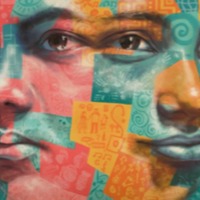
Shin Dong Hyuk (Narrative 2)
The Global Slavery Index 2018 estimates that there are 2,640,000 people living in conditions of modern slavery in The Democratic People’s Republic of Korea (North Korea). Men, women and children are subjected to forced labour and sex trafficking. Government oppression in the DPRK prompts many North Koreans to flee the country in ways that make them vulnerable to human trafficking in destination countries. Many of the estimated 10 000 North Korean women and girls who have migrated illegally to China to flee abuse and human rights violation are particularly vulnerable to trafficking. Some lure, drug, detain or kidnap North Korean women on their arrival, others offer jobs but subsequently force the women into prostitution, domestic service, or forced marriage. If found, Chinese authorities often repatriate victims back to the DPRK where they are subjected to harsh punishment including forced labour in labour camps or death. Shin Dong Hyuk was born in a North Korean prison labour camp in 1982. He tells of his experience growing up in the camp and being forced to work from a very young age. In the camp, food was restricted and beatings were common, by both prison officers and Shin Dong’s own mother. When he was fourteen, Shin Dong’s mother and brother attempted to escape the camp. He was forced to watch their execution and tortured himself for presumped involvement in their escape. In late 2004 Shin Dong was partnered with a man who had seen the outside world and they began to plan their own escape. In January 2005, they escaped while collecting firewood, however Shin Dong was the only one to succeed.
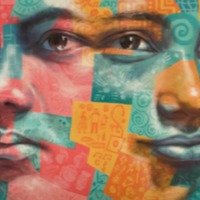
Ashia C
There are an estimated 171,000 people living in modern slavery in Nepal (GSI 2018). Within Nepal, bonded labour exists in agriculture, brick kilns, the stone-breaking industry, and domestic work. Sex trafficking of Nepali women and girls increasingly takes place in private apartments, rented rooms, guest houses, and restaurants. Nepali and Indian children are subjected to forced labor in the country, especially in domestic work, brick kilns, and the embroidered textile, or zari, industry. Under false promises of education and work opportunities, Nepali parents give their children to brokers who instead take them to frequently unregistered children’s homes in urban locations, where they are forced to pretend to be orphans to garner donations from tourists and volunteers; some of the children are also forced to beg on the street. According to Human Rights Watch, thirty-seven percent of girls in Nepal marry before age 18 and 10 percent are married by age 15, in spite of the fact that the minimum age of marriage under Nepali law is 20 years of age. UNICEF data indicates that Nepal has the third highest rate of child marriage in Asia, after Bangladesh and India Ashia C was forced to marry at an early age. Within the marriage she was subjected to physical violence.
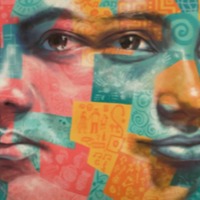
Saidu
There are an estimated 36,000 people living in conditions of modern slavery in Sierra Leone (GSI 2018). Sierra Leone is a source and destination country for men, women and children subjected to forced labour and sex trafficking. During the Sierra Leone Civil War 1991 to 2002 the Revolutionary United Front (RUF) sought to mobilise a youth underclass to form a ‘people’s army’ to overthrow the Momoh regime. The RUF abducted and trained numbers of captured youth to fight as child soldiers in their guerrilla warfare. Saidu emphasises the difficulties faced even by those not tainted with RUF violence in going back home. It is this wartime suspicion and hostility on the part of both civilians and military towards any dishevelled 'bush creature' that explains why the RUF/ SL strategy of abducting young Sierra Leoneans and turning them into combatants by force was so surprisingly effective. Once caught, most young people soon realised they had nowhere to run-that they risked death at the hands of government soldiers and civilians.
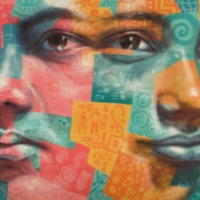
Dut Yai Yai
Dut Yai Yai was ‘redeemed’ (bought out of slavery) by Christian Solidarity International (CSI), a Zurich-based international human rights organization, in January 2007. He told his story to CSI staff in Aweil State, Southern Sudan. Along with the three main types of modern slavery (chattel slavery, debt bondage, and contract slavery), war slavery is another form of contemporary bondage. Thousands of women and children were taken into slavery during the decades of Sudan’s civil war, mainly from Northern Bahr El Ghazal and the Nuba Mountains. Slave-taking was revived in 1985 by the National Islamic government of Sudan primarily as a weapon against counterinsurgents in the South, and secondarily a way to reimburse its surrogate soldiers for neutralizing this threat. In 1989 the government created the Popular Defense Forces (PDF), militia trained to raid villages and take people as slaves. PDF recruits were allowed to keep whoever they captured, along with booty of grain and cattle. One study documents 12,000 abductions by name, while NGOs offer estimates ranging from 15,000 to 200,000. The slaves were often moved to large towns in the north on week-long journeys during which the women were repeatedly raped, and then sold to new masters who used them without pay for farming and sexual services. The peace process brought these PDF abductions to an end, but inter-tribal abductions continue in Southern Sudan. In addition, Sudanese children are used by rebel groups in the ongoing conflict in Darfur; Sudanese boys from the country’s eastern Rashaida tribe continue to be trafficked to the Middle East for use as camel jockeys; the rebel organization “Lord’s Resistance Army” has forcibly conscripted children in Southern Sudan for use as combatants in its war against Uganda; and the institution of chattel slavery continues in southern Darfur and southern Kordofan.
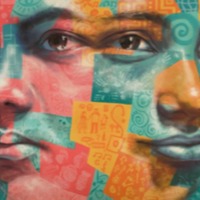
Afzal
There are an estimated 6000 people living in conditions of modern slavery in Kuwait (GSI 2018). Men and women migrate from South and Southeast Asia, Egypt, the Middle East, and increasingly throughout Africa to work in Kuwait, predominantly in the domestic service, construction, hospitality, and sanitation sectors. The vast majority of migrant workers arrive voluntarily; however, upon arrival some sponsors subject migrants to forced labour, including through non-payment of wages, protracted working hours without rest, deprivation of food, threats, physical or sexual abuse, and restrictions on movement, such as confinement to the workplace and the withholding of passports. Many of the migrant workers arriving in Kuwait have paid exorbitant fees to labour recruiters in their home countries or are coerced into paying labour broker fees in Kuwait which, according to Kuwaiti law, should be paid by the employer—a practice making workers highly vulnerable to forced labour, including debt bondage. To a lesser extent, migrant women are also subjected to forced prostitution. Afzal travelled from Bangladesh to Kuwait to follow his wife who had been working abroad for three years. Afzal was sent to do housework where he experienced threats, beatings and sexual violence at the hands of his employer and her sons.
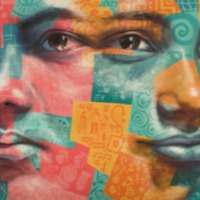
Rosa
There are an estimated 10,000 people living in conditions of modern slavery in Lebanon (GSI 2018). It is a destination for Asian and African women trafficked for the purpose of domestic servitude, and for women from Easter Europe for commercial sexual exploitation. There are estimated 200,000 migrant domestic workers in Lebanon and until 2012, Lebanon was the top country of destination for female migrant workers from Nepal. Women who travel to Lebanon legally to work as household servants often find themselves in conditions of forced labour through the withholding of passports, non-payment of wages, restrictions on movement, threat and physical of sexual assault. A Togolese former domestic worker. She received support from Caritas, which is a confederation of 165 member organizations that serve the world’s poor, vulnerable, dispossessed and marginalized. Since 1994, Caritas Lebanon has responded to the legal, social and humanitarian needs of migrant domestic workers and refugees. To date, they have provided vital support to more than 1,540,000 migrant beneficiaries.
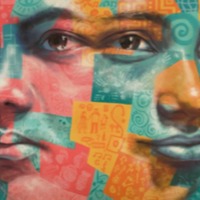
Hada
There are an estimated 58,000 people living in conditions of modern slavery in Benin (GSI 2018). The country is an origin, transit and destination country for women and children subjected to trafficking in persons, primarily for forced labour and sex trafficking. Trafficking victims most often come from low-income families, and frequently lack formal education or basic identity documents including birth certificates and national identification. Internal trafficking primarily draws children from rural areas in the north to the urban south of Benin in search of economic opportunity. Children from Benin who are subjected to trafficking externally are transported to West and Central African countries. Some parents send children to wealthier families for educational or vocational opportunities; a practice called vidomegon. Some of these children are subjected to domestic servitude. Children from neighboring countries are forced to labor on farms, in commercial agriculture (particularly in the cotton sector), in artisanal mines, at construction sites, or as street or market vendors in Benin. Hada is from the prefecture of Blitta. He is typical of many boys who go with traffickers without the knowledge of their parents and end up in the plantations of Benin where they perform long hours of difficult, hazardous and unpaid labour.
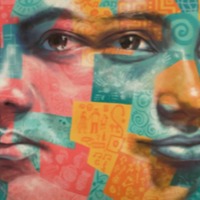
Rajita T
There are an estimated 171,000 people living in modern slavery in Nepal (GSI 2018). Within Nepal, bonded labour exists in agriculture, brick kilns, the stone-breaking industry, and domestic work. Sex trafficking of Nepali women and girls increasingly takes place in private apartments, rented rooms, guest houses, and restaurants. Nepali and Indian children are subjected to forced labor in the country, especially in domestic work, brick kilns, and the embroidered textile, or zari, industry. Under false promises of education and work opportunities, Nepali parents give their children to brokers who instead take them to frequently unregistered children’s homes in urban locations, where they are forced to pretend to be orphans to garner donations from tourists and volunteers; some of the children are also forced to beg on the street. According to Human Rights Watch, thirty-seven percent of girls in Nepal marry before age 18 and 10 percent are married by age 15, in spite of the fact that the minimum age of marriage under Nepali law is 20 years of age. UNICEF data indicates that Nepal has the third highest rate of child marriage in Asia, after Bangladesh and India.Rajita T. was married when she was 12 or 13 to her husband who was about 18 years old
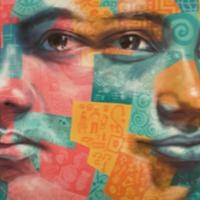
Rhadia
There are an estimated 85,000 people living in modern slavery in Yemen (GSI 2018). Young girls are subjected to child forced marriage, with UNICEF estimating 32% of girls being married before the age of 18. There is currently no legal age of marriage in Yemen and poverty, the practice of dowry and strict social and religious customs are drivers of child marriage in the country. With the onset of conflict within the country, estimates suggest that child marriage is on the rise. Rhadia was married at 16 and has lived with her husband and in-laws for over 8 years by whom she is physically abused.

Fatima
There are an estimated 85,000 people living in modern slavery in Yemen (GSI 2018). Young girls are subjected to child forced marriage, with UNICEF estimating 32% of girls being married before the age of 18. There is currently no legal age of marriage in Yemen and poverty, the practice of dowry and strict social and religious customs are drivers of child marriage in the country. With the onset of conflict within the country, estimates suggest that child marriage is on the rise. Fatima was married at 12 to a man in his late twenties. She lived in the same house with her husband’s mother, brothers, and sister.
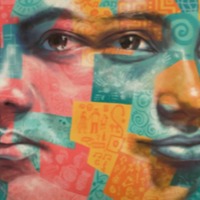
Elias
There are an estimated 451,000 people living in modern slavery in Eritrea (GSI 2018). The small country has a unique system of compulsory, open-ended military service for citizens that makes it one of the most oppressive states in the world. The government has enforced its current policy of sending all secondary school students to serve for a minimum of twelve months since 2003. While Eritrean law puts the minimum conscription age at 18, many teenagers find themselves recruited during high school at age 16 or even younger. In rural areas, where formal education is rarer, the army will visit villages to round up young girls and boys who look roughly of age, to begin their program of combat training and forced labour. Elias was 15 years old when he was imprisoned for attempting to flee Eritrea. He was then sent to a military training camp where he tells of the starvation and beatings he and other children endured. Elias was finally able to escape and leave the country.
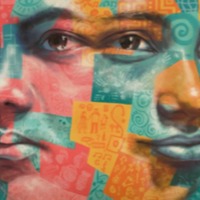
Segen
There are an estimated 451,000 people living in modern slavery in Eritrea (GSI 2018). The small country has a unique system of compulsory, open-ended military service for citizens that makes it one of the most oppressive states in the world. The government has enforced its current policy of sending all secondary school students to serve for a minimum of twelve months since 2003. While Eritrean law puts the minimum conscription age at 18, many teenagers find themselves recruited during high school at age 16 or even younger. In rural areas, where formal education is rarer, the army will visit villages to round up young girls and boys who look roughly of age, to begin their program of combat training and forced labour. Segen was 14 years old when she tried to flee Eritrea. However she was caught and imprisoned. In prison she was subjected to unhygienic conditions, and physical abuse.
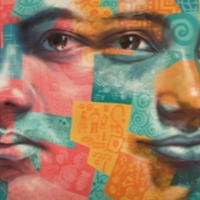
Heyab
There are an estimated 451,000 people living in modern slavery in Eritrea (GSI 2018). The small country has a unique system of compulsory, open-ended military service for citizens that makes it one of the most oppressive states in the world. The government has enforced its current policy of sending all secondary school students to serve for a minimum of twelve months since 2003. While Eritrean law puts the minimum conscription age at 18, many teenagers find themselves recruited during high school at age 16 or even younger. In rural areas, where formal education is rarer, the army will visit villages to round up young girls and boys who look roughly of age, to begin their program of combat training and forced labour. Heyab was caught trying to flee the country in 2009 when she was 16 years old and imprisoned for eight months. While in prison she was subjected to physical abuse and beatings.
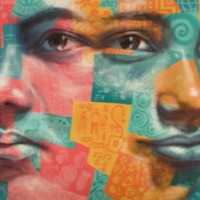
Habtu
There are an estimated 451,000 people living in modern slavery in Eritrea (GSI 2018). The small country has a unique system of compulsory, open-ended military service for citizens that makes it one of the most oppressive states in the world. The government has enforced its current policy of sending all secondary school students to serve for a minimum of twelve months since 2003. While Eritrean law puts the minimum conscription age at 18, many teenagers find themselves recruited during high school at age 16 or even younger. In rural areas, where formal education is rarer, the army will visit villages to round up young girls and boys who look roughly of age, to begin their program of combat training and forced labour. Habtu was taken to Sawa training camp in 2010. There he was forced to cook the soldier’s meals and was subjected to physical abuse daily.
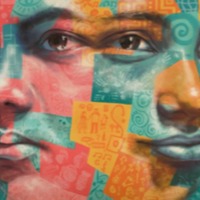
Hiwot
There are an estimated 451,000 people living in modern slavery in Eritrea (GSI 2018). The small country has a unique system of compulsory, open-ended military service for citizens that makes it one of the most oppressive states in the world. The government has enforced its current policy of sending all secondary school students to serve for a minimum of twelve months since 2003. While Eritrean law puts the minimum conscription age at 18, many teenagers find themselves recruited during high school at age 16 or even younger. In rural areas, where formal education is rarer, the army will visit villages to round up young girls and boys who look roughly of age, to begin their program of combat training and forced labour. Hiwot was taken to a military training camp when she was 17 years old. She was subjected to starvation, rape and beatings for six months until her parents came looking for her and brought documentation to prove she was not yet 18.
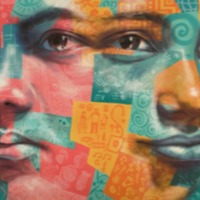
Luwam
There are an estimated 451,000 people living in modern slavery in Eritrea (GSI 2018). The small country has a unique system of compulsory, open-ended military service for citizens that makes it one of the most oppressive states in the world. The government has enforced its current policy of sending all secondary school students to serve for a minimum of twelve months since 2003. While Eritrean law puts the minimum conscription age at 18, many teenagers find themselves recruited during high school at age 16 or even younger. In rural areas, where formal education is rarer, the army will visit villages to round up young girls and boys who look roughly of age, to begin their program of combat training and forced labour. In 2007, like other adolescents in the Northeast African country of Eritrea, Luwam Estifanos was taken to Sawa, a military camp near the Sudanese border. Luwam was forced to get up 5.30am, run for two hours before sunrise, followed by 12 hours of weapons training, marching and cleaning. She recalls how girls were forced to engage in the same activities as boys however they are also subjected to sexual assault. Luwam was finally able to escape in 2010, making a 12-hour trek through the desert into Sudan. After a year in Sudan, Luwam travelled to Uganda and following one refusal and months of waiting, was eventually granted asylum in Norway with the rest of her family.
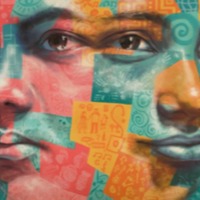
Hyiab
There are an estimated 518,000 people living in modern slavery in Egypt, 465,000 in Sudan and an estimated 451,000 in Eritrea (GSI 2018). Since 2006 tens of thousands of Eritreans fleeing widespread human rights abuses and destitution have ended up in Egypt’s Sinai Peninsula. Until 2010, they passed through Sinai voluntarily and generally without any problems and crossed in to Israel. However, since then, Sudanese traffickers have kidnapped Eritreans in eastern Sudan and sold them to Egyptian traffickers in Sinai who have subjected at least hundreds to violence in order to extort large sums of money from their relatives. Hyiab* paid to be smuggled from Eritrea to Israel, however on the way she was held captive for eleven months, tied up and beaten. She was only able to escape after paying the smuggler’s ransom.
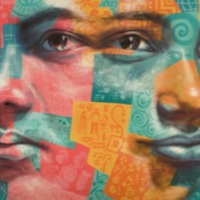
Aatifa
There are an estimated 518,000 people living in modern slavery in Egypt, 465,000 in Sudan and an estimated 451,000 in Eritrea (GSI 2018). Since 2006 tens of thousands of Eritreans fleeing widespread human rights abuses and destitution have ended up in Egypt’s Sinai Peninsula. Until 2010, they passed through Sinai voluntarily and generally without any problems and crossed in to Israel. However, since then, Sudanese traffickers have kidnapped Eritreans in eastern Sudan and sold them to Egyptian traffickers in Sinai who have subjected at least hundreds to violence in order to extort large sums of money from their relatives. Aatifa* was kidnapped, raped and beaten for a month on her way to Israel from Eritrea.
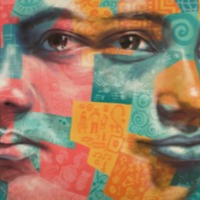
Lemlem
There are an estimated 518,000 people living in modern slavery in Egypt, 465,000 in Sudan and an estimated 451,000 in Eritrea (GSI 2018). Since 2006 tens of thousands of Eritreans fleeing widespread human rights abuses and destitution have ended up in Egypt’s Sinai Peninsula. Until 2010, they passed through Sinai voluntarily and generally without any problems and crossed in to Israel. However, since then, Sudanese traffickers have kidnapped Eritreans in eastern Sudan and sold them to Egyptian traffickers in Sinai who have subjected at least hundreds to violence in order to extort large sums of money from their relatives. Lemlem* left Eritrea after defecting from the army and planned to travel to Sudan. However, she was kidnapped on the way and transferred to Sinai. Lemlem was subjected to physical abuse and torture until she paid them a ransom to release her.
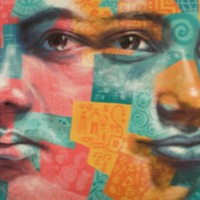
Awate
There are an estimated 518,000 people living in modern slavery in Egypt, 465,000 in Sudan and an estimated 451,000 in Eritrea (GSI 2018). Since 2006 tens of thousands of Eritreans fleeing widespread human rights abuses and destitution have ended up in Egypt’s Sinai Peninsula. Until 2010, they passed through Sinai voluntarily and generally without any problems and crossed in to Israel. However, since then, Sudanese traffickers have kidnapped Eritreans in eastern Sudan and sold them to Egyptian traffickers in Sinai who have subjected at least hundreds to violence in order to extort large sums of money from their relatives. Awate* was kidnapped on the way to Israel from Eritrea. She was kept for two weeks in Sudan and then transferred to Sinai where she was subjected to physical and sexual abuse. She was finally released after her family paid the smuggler’s ransom.